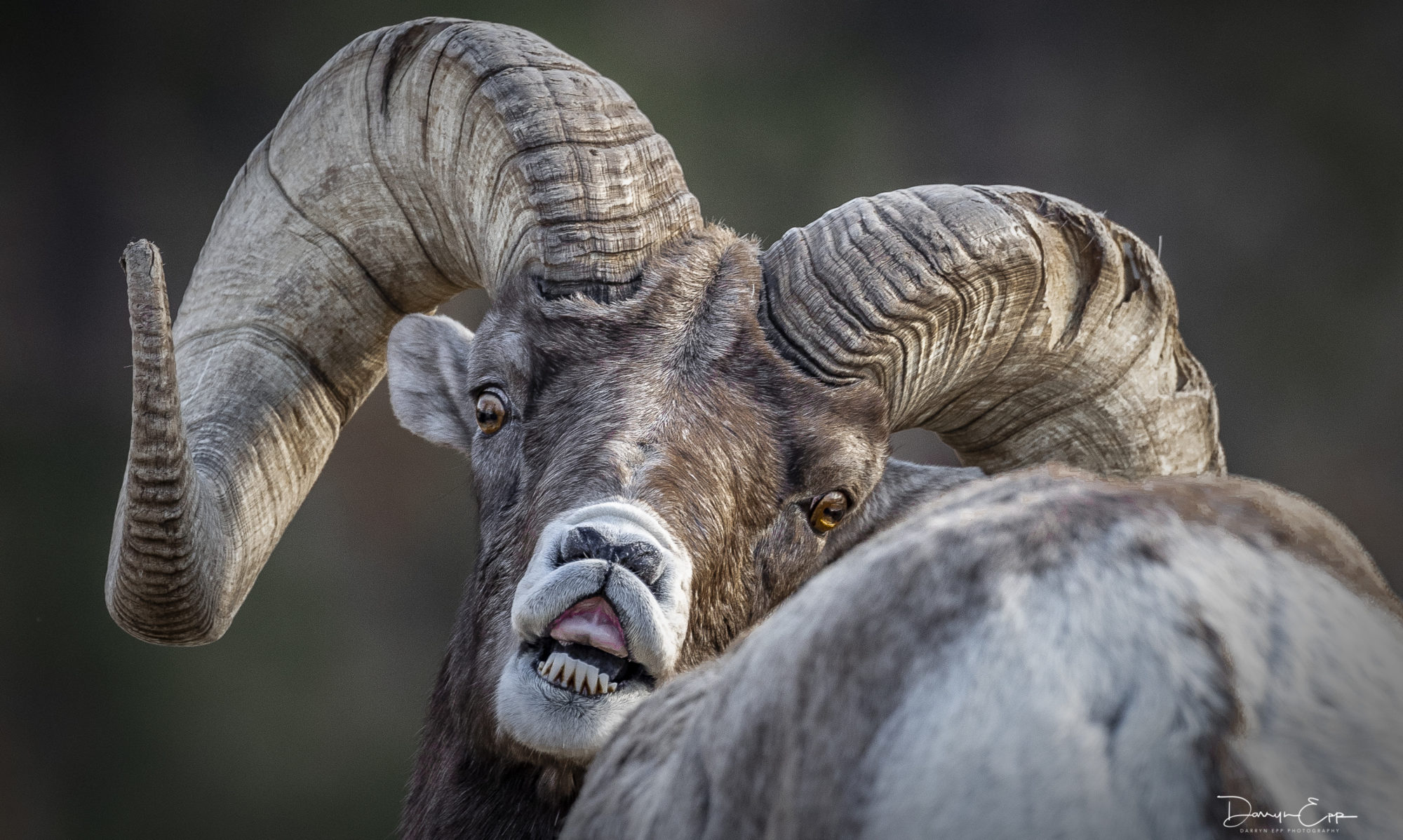Here in the land of enchantment we are lucky enough to have two species of Bighorn Sheep. The Rocky Mountain Bighorn Sheep is the larger of the two, a large ram (a male sheep) may weigh over 300 pounds and stand over 42 inches tall at the shoulder. They are generally a dark brown to gray/brown color with a white rump patch, muzzle and back of legs. Their coats may appear considerably lighter in spring before the winter coat is shed revealing the darker summer coat beneath. Rams have horns that are massive and tightly curled close to the face. A ewe (a female sheep) will have smaller shorter horns that curve only slightly. Ewes typically weigh 125-150 pounds. Rocky Mountain Bighorns are found in British Columbia and Alberta, Canada and in the western United States south through Arizona and New Mexico.
Desert Bighorn Sheep are generally smaller and lighter colored than their cousins, the Rocky Mountain Bighorn Sheep. A large ram is usually not over 220 pounds. They stand 38-42 inches tall at the shoulder. Desert Bighorns are found in the southwestern United States, including Utah, Nevada, New Mexico, Arizona and southern California. A significant population is also found in northern Mexico. The horns of Desert Bighorns are typically longer and not as massive as those of Rocky Mountain Bighorns. They are usually curled close to the face, but may flare widely outward, showing wide variation in horn structure between individuals. Desert Bighorns also have slightly longer ears and tails than Rocky Mountain Bighorns. Desert Bighorn ewes also typically have longer horns than other North American wild sheep females.
The Challenges We Face
At present in New Mexico, we face two significant Wild Sheep challenges. The first is the threat of deadly disease from domestic sheep and goats. Mycoplasma Ovipneaumoniae, better known as Movi, is a pneumonia pathogen which can be transmitted from domestic sheep and goats to bighorn sheep. And it is deadly to wild sheep. We recently discovered that our Rio Grande Gorge herd of RMBHS has now contract the Movi pathogen. The damage is currently being assessed by the NMDGF and the Taos Pueblo. We have encouraged both the Carson National Forest and the BLM to take action to minimize the possibility of further disease transmission in the area of the Rio Grande Gorge. The second major challenge is the threat of feral horses on wildlife habitat west of and including parts of the Ladrone Mountains. Currently there are several hundred illegal horses occupying a BLM grazing allotment west of the Ladrones. These horses are destroying prime bighorn, elk, mule deer and pronghorn habitat, not to mention the Rio Solado riparian habitat of countless other wild birds mammals and amphibians. This situation has existed for quite some time now and the BLM has chosen to take no action. This is a very critical issue and we need to resolve it sooner than later.

